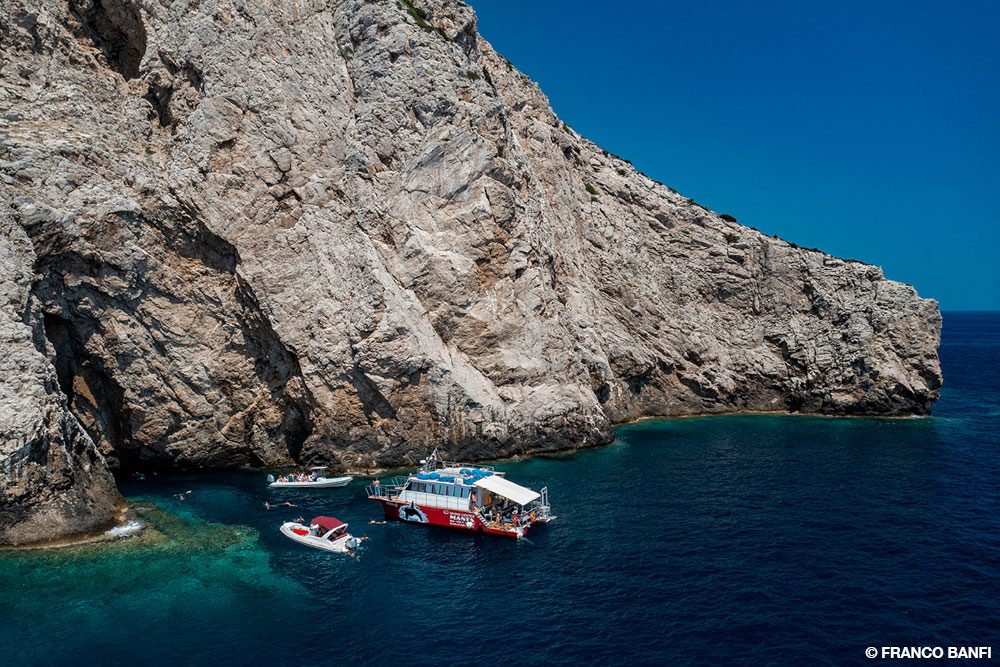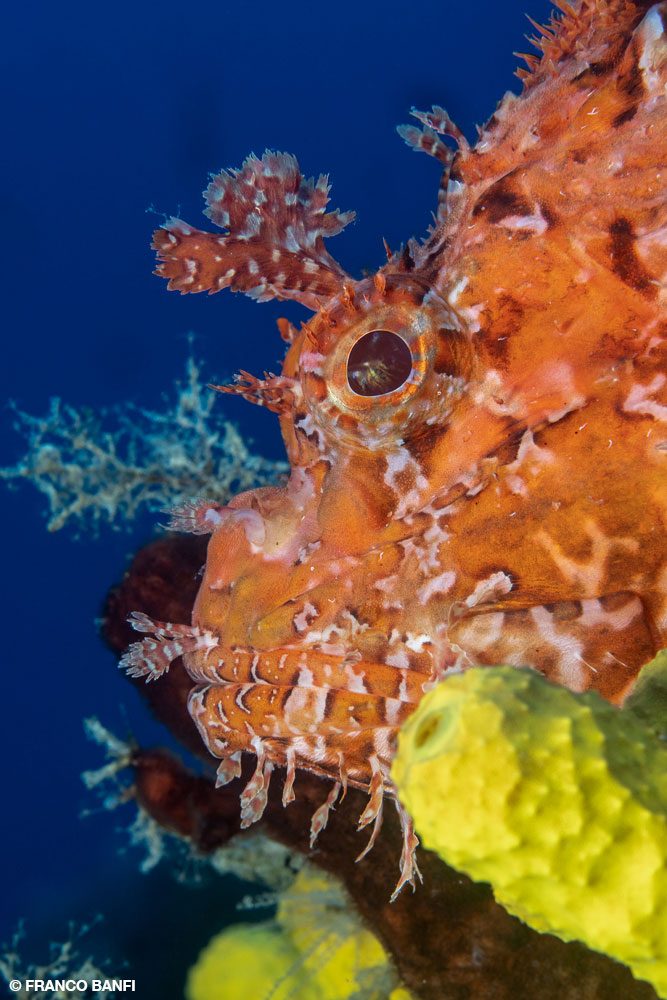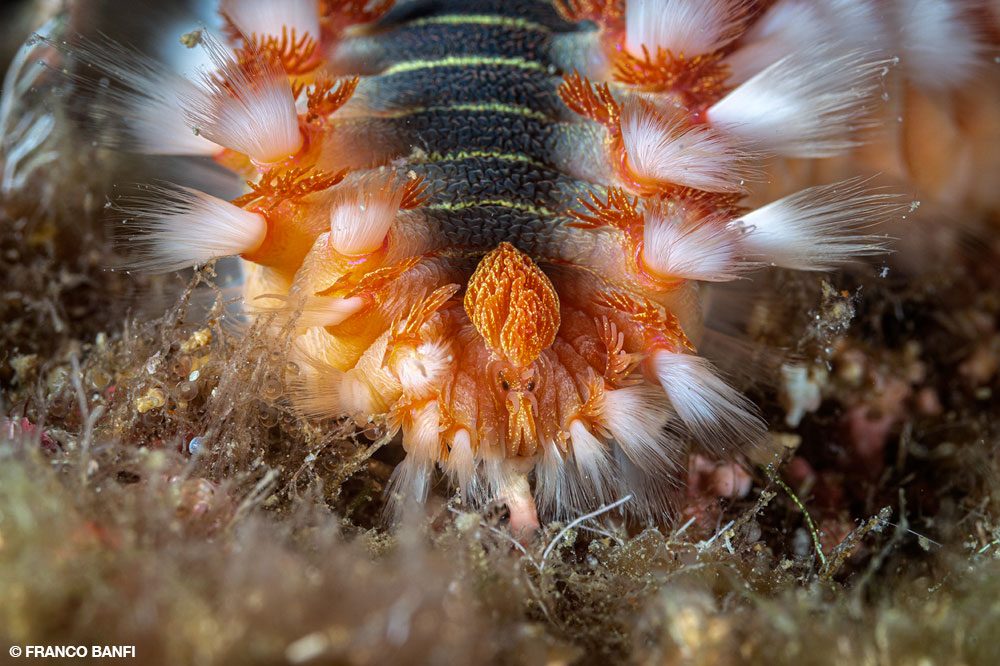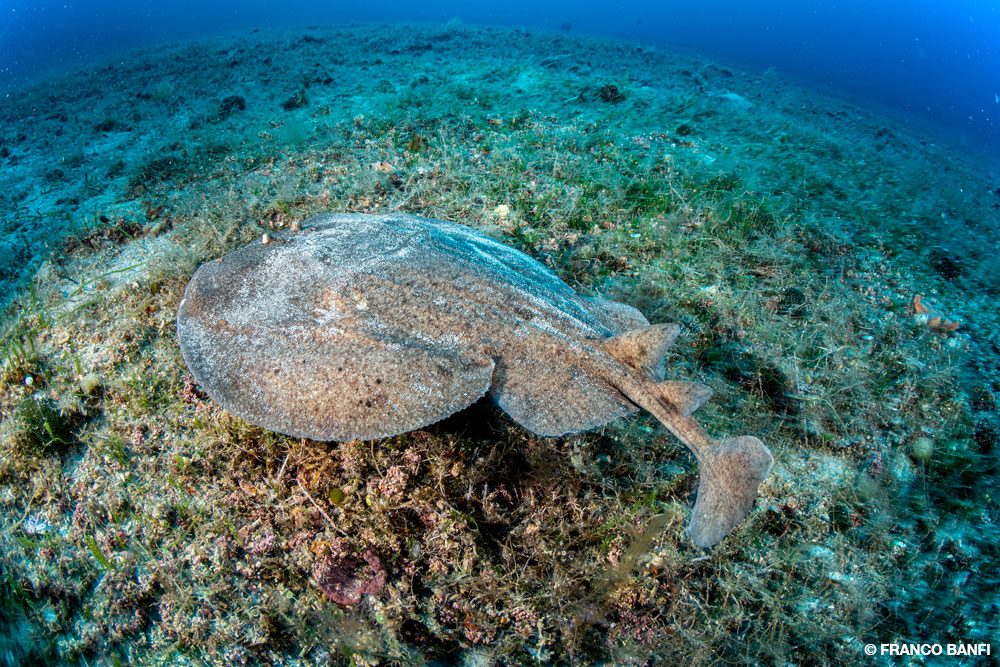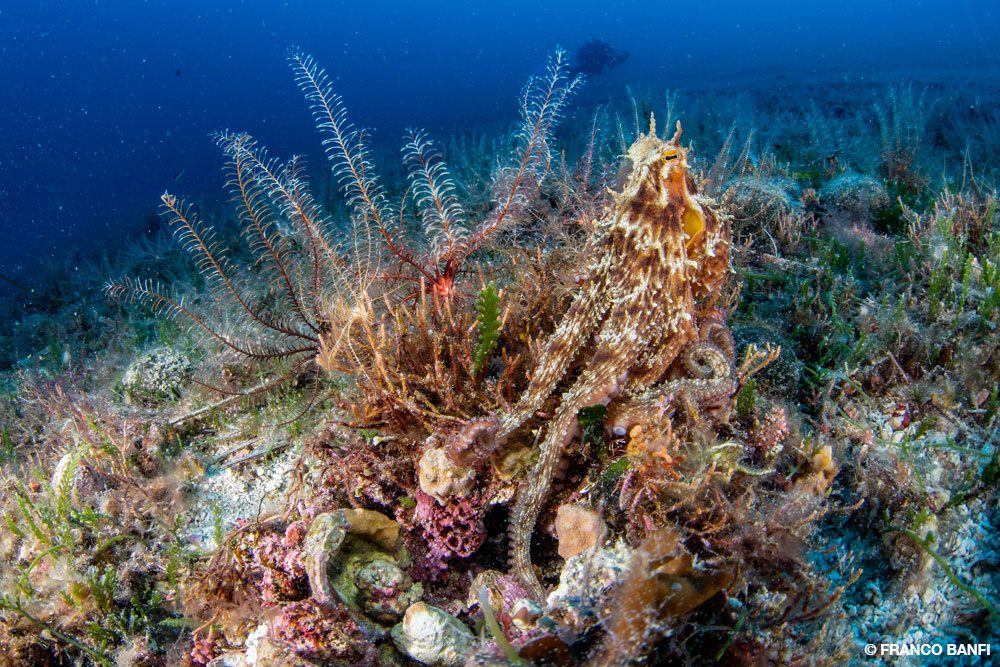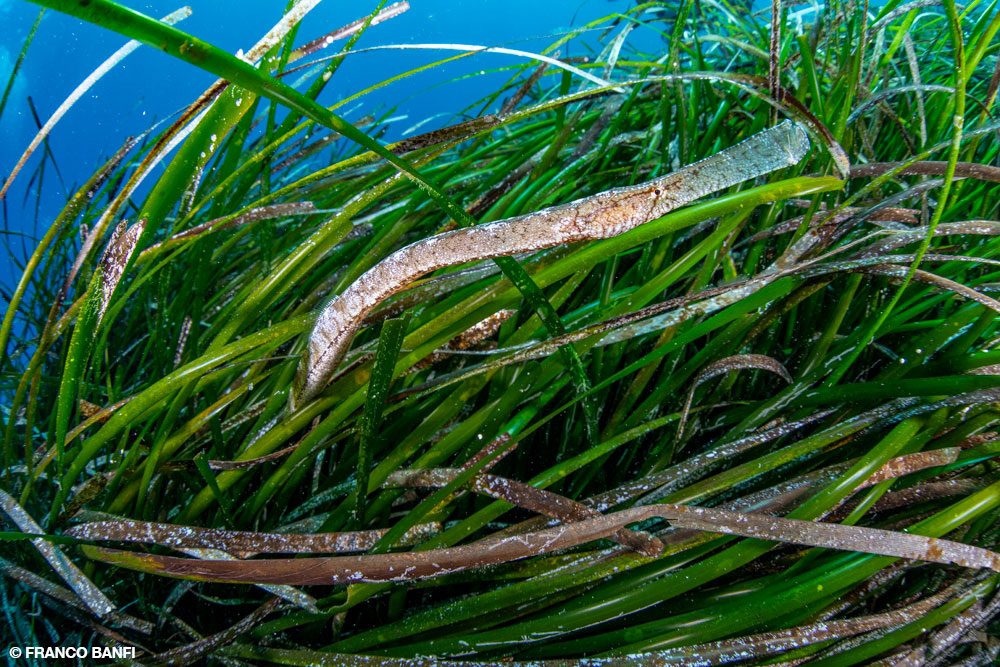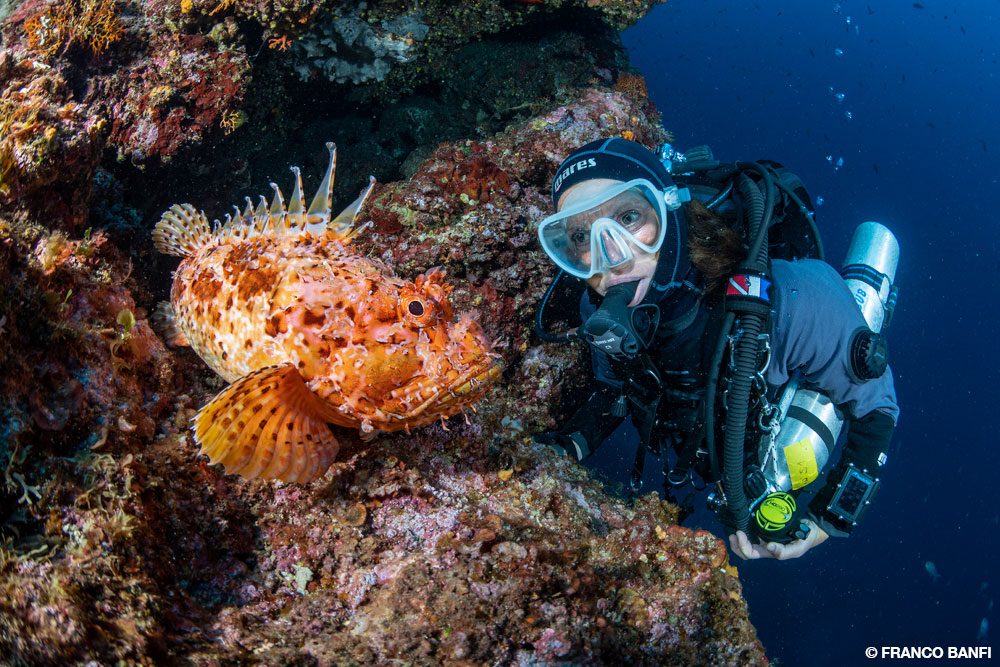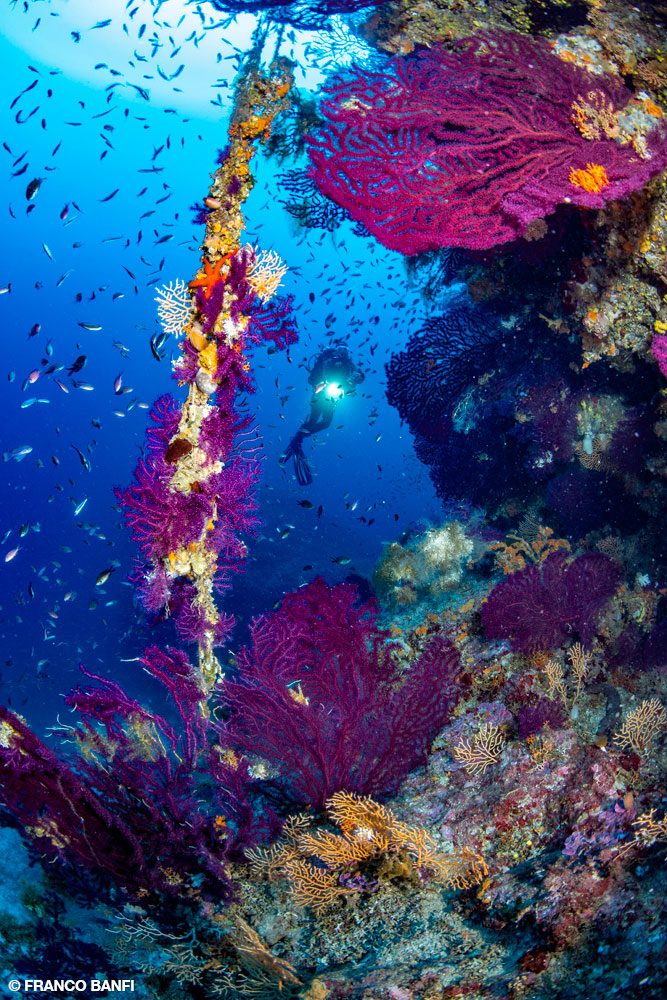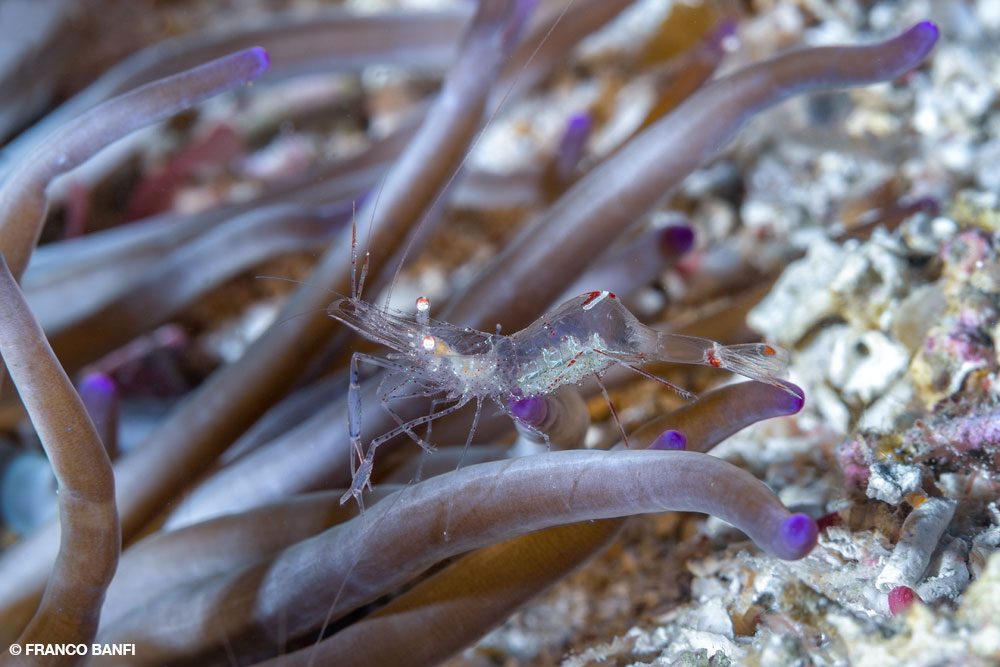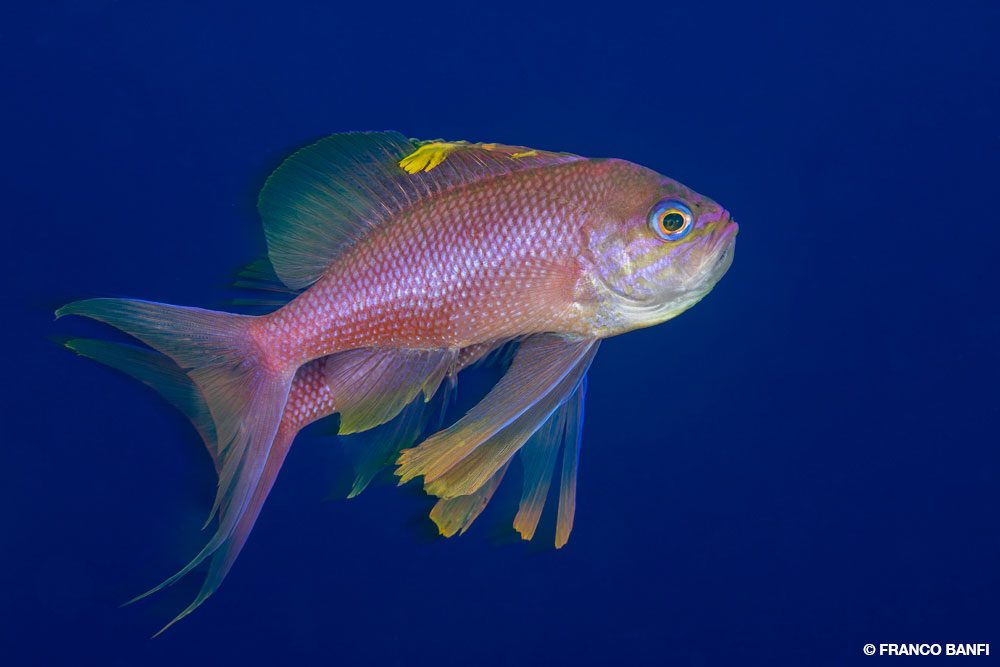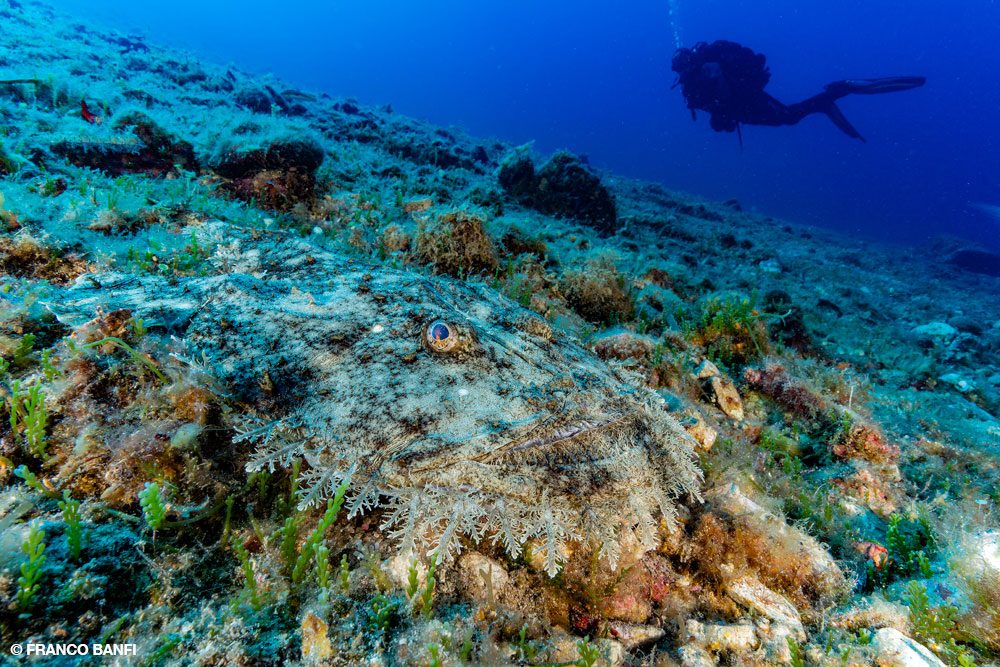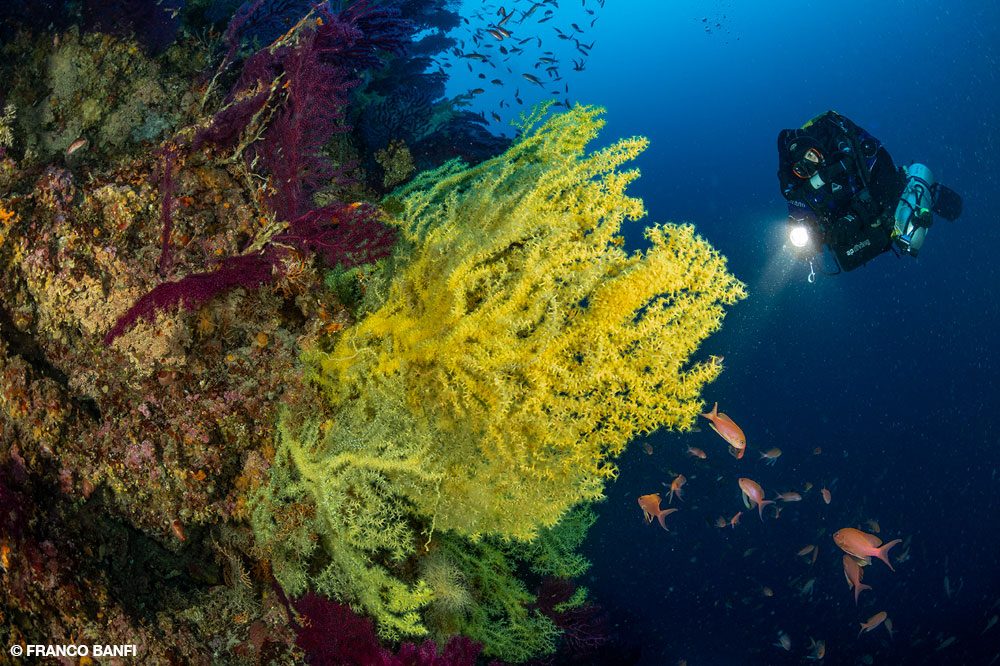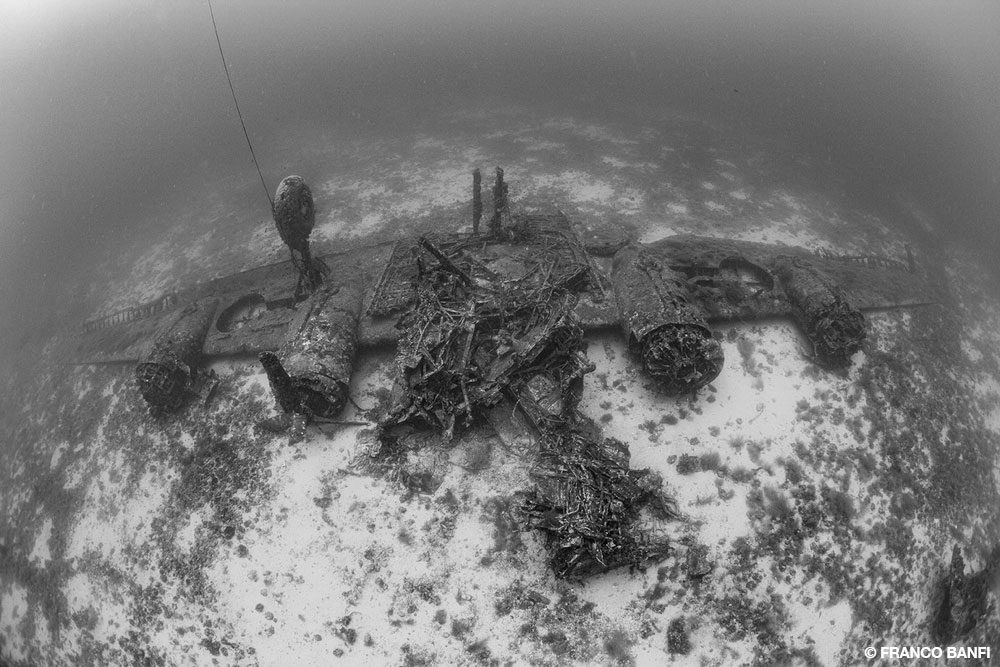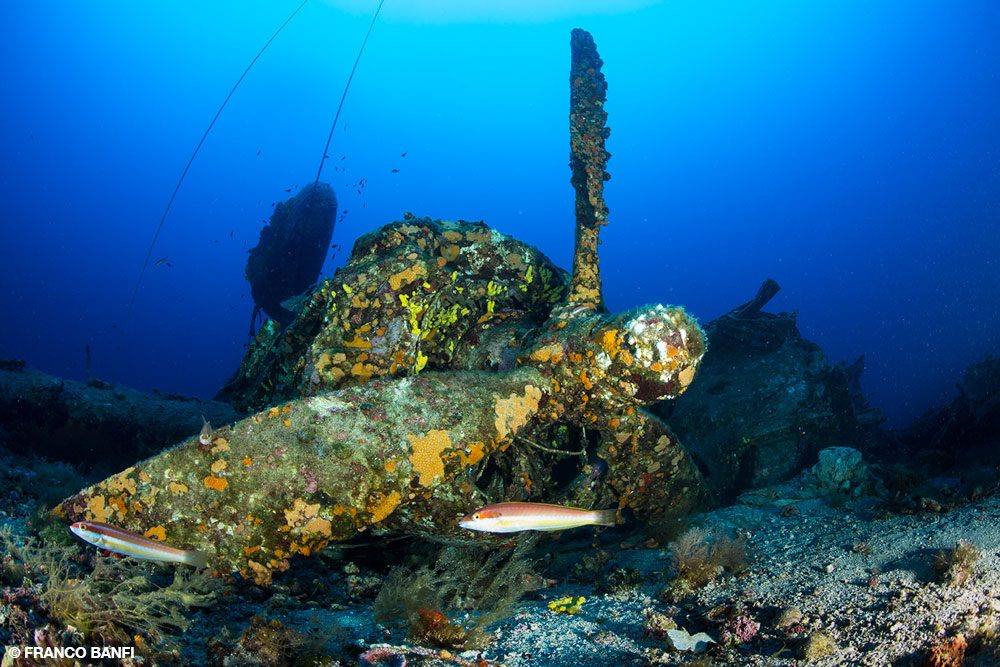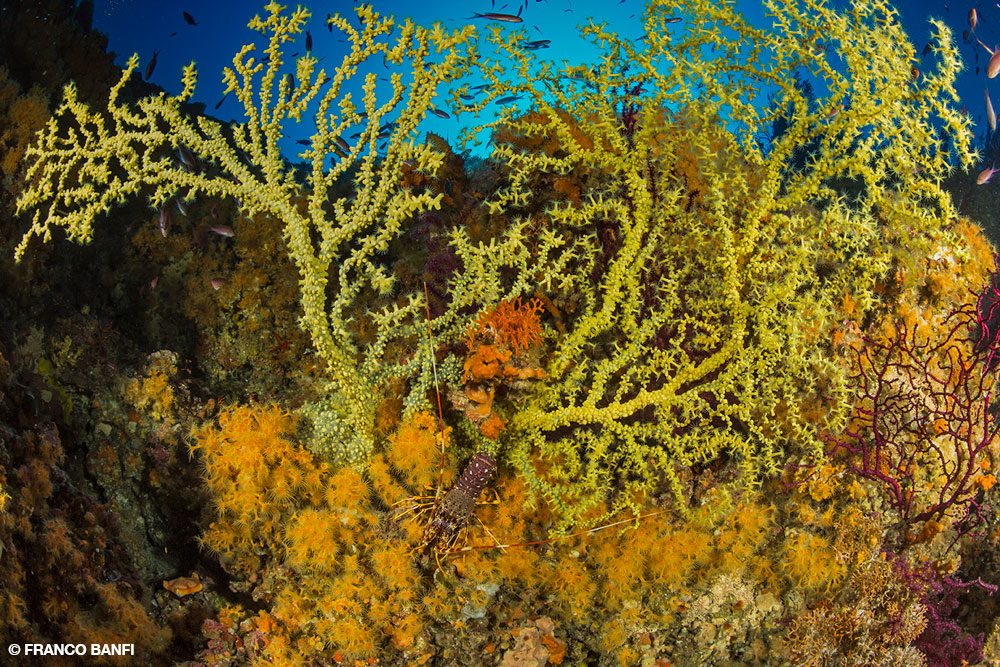A JEWEL IN THE ADRIATIC SEA
THE CRYSTAL-CLEAR EASTERN ADRIATIC SEA is promising and seductive. The tiny islands, with their rocky beaches, upright cliffs, and hidden lakes, offer a variety of environments and ecosystems that are among the Mediterranean’s most intact and pristine. The southern part of the Adriatic’s Croatian side has steep, rocky plateaus with plenty of bridges, cracks, and caves. The sea has opened gaps in the porous rocks, carving and shaping cathedrals entirely built of limestone.
On every dive we discover new and different environments, depending on the depth and currents, which determine the unique biological developments. In a few places a continuous succession of caves and niches at Vis Island create environments rich in sponges, gorgonians, bryozoans, tunicates, encrusting algae, yellow polyps, and various soft corals saturated with color. These landscapes are a true painter’s palette.
Other places reveal an intricate tangle of extraordinarily varied jewel anemones, hydroids, and crinoids. There are so many of these creatures that they completely cover the substrate on which they have settled in a vibrant mosaic.
Red sea fans often colonize the north-facing bridge walls, contrasting strongly with the sea’s deep blue. Among the sea fans are large, brightly colored sponges and rings of isolated white tubeworms. The walls end at sandy seabeds. Scouring the rocks, we find huge scorpionfish, lobsters, and dogfish in their favorite retreats. An expert guide shows me some branches of precious red coral of considerable size in the rocky crevices.
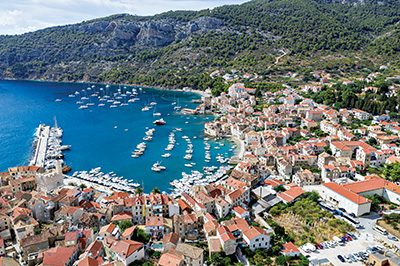
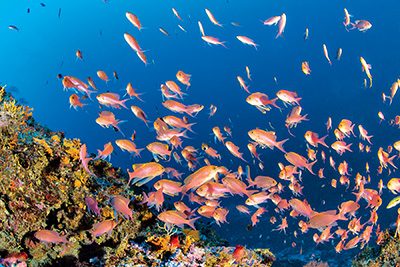
Sponges are frequent on all our dives. Most common are the dark and inconspicuous Spongia officinalis and the yellow-gold Aplysina aerophoba. Attached to these ancient creatures are eggs of squids, crinoids, and sometimes even entire colonies of yellow polyps. The Cacospongia offer support for delicate crinoidsand nourishment to many nudibranchs, including the small Phyllidia flava, with white tubercles covering their yellow-orange bodies.
The pinnacles and the bridges are home to different communities on each wall section. Some have abundant fluorescent worms, while other shallower sites have colonies of yellow polyps covering dozens of square meters of rock, leaving the opportunity for fans, sponges, and bryozoans to grow. The deeper hosts are often red gorgonians and false black corals of remarkable size.
The morphology of the spires that rise from the bottom is varied and beautiful. They form a series of canyons, fissures, and saddles where fish and shellfish gather in crowds regardless of the presence of nearby divers. When something strange happens, the Anthias take refuge among the coral branches. Then they slowly and timidly leave their hiding places and launch together toward the blue sea.
The rock resembles a great bread rising as it swells while maintaining the same form. The pink fish faithfully maintain their distance in their dense arrangement, with their little faces lined up against the current and their mouths open to capture small suspended particles.
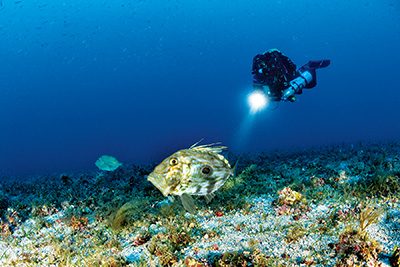



Vis and the Dalmatian Archipelago
Vis is the furthest inhabited Croatian island from the mainland. After World War II, Vis was a naval base for the Yugoslav People’s Army until 1989, so there were no permanent civil residents, and it was closed to tourists. The island is exposed to storms from all four directions, a quality it shares with the smaller Lastovo.
Vis and Lastovo are the final outposts before the boundless expanse of blue beyond. The inhabitants of these islands live on the blurred border between land and sea. They are fishers and lighthouse keepers, sailors and professional divers, incurable dreamers and adventurers. We found the dive operators on Vis to be bighearted people. Their availability, professionalism, care for their equipment, and open minds are a good complement for divers looking for true wonders and are fit for deep and cold diving.
Vis and the Dalmatian archipelago’s smaller islets offer countless dive sites, from underwater ridges to drop-offs, from shipwrecks to wrecks of airplanes, from shallow shelves to towering upright walls and karst caves. It is difficult to say which site is the best, but every diver, from a beginner to the most experienced technical diver, can find something interesting.
The Adriatic Sea is a crossroads of old trade and more modern military routes and overflows with wrecks that are evidence of ancient splendors, navigation errors, and violent war incidents. Many now-sunken ships had strategic importance during wartime, both for combat activity and civil transportation. After sinking, they gain unique charms and live on as underwater ecosystems in a perfect balance of overlaying madrepores, tunicates, and bryozoans. Crabs, lobsters, conger eels, and scorpionfish hide in the holds, cabins, and engine rooms.
Closed-circuit rebreather (CCR) diving is a niche market in the Adriatic Sea, and finding professional rebreather-friendly dive centers in Croatia is not common, but a dive center in Komiža is specialized for technical divers. The market is growing quickly since technical diving and CCRs allow us to extend our time and access the fascinating deeper wrecks.


Wreck Diving
One of the most intriguing aircraft wrecks is the B-17 Flying Fortress, which lies at 236 feet (72 meters) and is a relatively short distance from the wreck of the B-24 Liberator nicknamed “Tulsamerican,” denoting its status as the last one manufactured in Tulsa, Oklahoma. The B-17 was lost on Nov. 6, 1944, and the B-24 went down the next month, on Dec. 17.
When we reach the seabed, the remarkably intact aircraft rest on the sand as if they had just landed, with scant evidence of the violence of their last flights. The Allied forces operated an emergency landing strip on Vis for aircraft that could not make it back across the Adriatic to their bases in southern Italy. The small airfield was the last chance for many U.S. planes after bombing runs. Both bombers lost power while circling Vis, waiting for the busy runway to clear, and are now well-preserved at the bottom.
The historic drama at this key strategic location contrasts with the tranquillity of the charming little island, whose regular visitors now include yacht crews meandering along the Dalmatian coastline and families looking for a relaxing getaway.
There are several shipwrecks to explore around Vis, which start at between 26 feet (8 meters) and 335 feet (102 meters). They are magnets for all kinds of fish and shellfish, hosting thriving communities of various fauna species.
Conger eels inhabit the shallow wreck ofthe steamship Teti and play hide-and-seek even during the day. Over the stern we find large, camouflaged scorpionfish, and forkbeards with their long barbels assemble under the hull. A school of sardines comes swimming up as a cloud, completely obscuring the wreck before disappearing without a trace, and a crowd of mullets moves past us as we swim alongside the middle of the ship.

Cowries (Luria lurida) don’t like the light and usually hide in small caves during the day.
The wreck of the steamship Vassilios T. is one of the largest in the Adriatic Sea and requires multiple dives to explore. This excellently preserved 344-foot (105-meter) Greek cargo steamship rests on its port side and is still laden with coal. The ship ran aground under mysterious circumstances on the night of March 19, 1939. Speculation is that it either sank due to navigational errors or deliberate action by the captain and crew to provide the owner with a means of insurance fraud.
The bow and gigantic anchor are the shallowest and easiest parts to dive. The stern, with its richly encrusted propeller and rudder, is at 174 feet (53 meters), so it requires technical dive training and experience. While swimming toward the stern we see encrusted deck machinery before the cavernous holds appear. A mast lies on the seabed, covered in yellow tube sponges. The bridge itself has disappeared, leaving only the remains of the funnels. As we reach the stern, it towers above us, encrusted in fan corals. The huge propeller is still attached. Rising to shallower depths, we find ideal shelter from the mild current among the ship’s colorful walkways.




Reefs
Two dive spots off the bay of Komiža — Sika 3 dan Sika 6 — offer reef dives that are suitable for most divers. Their positions leave them open to life-bringing currents.
One of Vis Island’s biggest red gorgonian colonies is on Sika 6’s outer pinnacle. Technical divers can access the lower wall, which drops to nearly 200 feet (60 meters), and follow a guide to branches of precious red coral in the shadows. Scorpionfish, damselfish, white sea breams, and benthic fauna inhabit the shallower side.
Sika 3 is closer to shore and starts at just 10 feet (3 meters). Yellow sea fans dot the reef, and sea anemones and red gorgonians cover some of the shadowy areas on the lower part of the wall. Your guide can help you find a colony of bright yellow-black coral.
There are many off-limits areas and marine parks with dive restrictions, and only some official dive centers have special permission to take divers to those places. This practice protects the habitats and encourages divers to use registered dive businesses. The dive guides have excellent knowledge of all the dive sites and can show divers every shoal, every reef wall, and where to find the most beautiful creatures in the Adriatic Sea.
Cara Menyelam
Sampai di sana: Croatia Airlines has flights from major European hubs to Split Airport (SPU) on mainland Croatia. From there, you can take a ferry to Vis. There are only a few hotels on the island, so finding openings during the dive season can be challenging. There are plenty of private apartments and rooms to rent. The currency is the Croatian kuna (HRK), but restaurants will accept the major credit cards. The U.S. dollar is not used. Croatian is the official language, but almost everyone speaks English.
Diving: There is diving available here for beginner, experienced, and technical divers. Planning your trip with a certified diving center is the easiest way to get the best dives. The dive sites are mostly reachable by boats or rigid inflatable boats, and most cylinders have a DIN valve. The dive shops usually have trimix and nitrox available, but it is always good to make a breathing-gas request with the dive center when you make a reservation. Dives typically start at about $40 for a single dive, with additional fees for specific wrecks, gas mixes, and night dives. You can usually get a discount with multiple dives.

Kondisi: The dive season runs from mid-April to mid-October. The climate isMediterranean, with almost no precipitation, pleasant air temperatures in spring and summer, and breezes that help keep you comfortable. During the dive season, average water temperatures near the surface range from about 68°F (20°C) to 82°F (28°C), but upwellings often bring colder temperatures at depth. We suggest wearing a drysuit.
Mosquitoes are abundant in the summer, so bring mosquito repellent and use nets when you sleep. There are recompression chambers in Komiža and Split, with transportation available via speedboat or helicopter. AD
JELAJAH LEBIH LANJUT
See more about diving around Vis Island in the bonus photo gallery and the videos below.
https://www.pbs.org/wgbh/nova/video/last-b-24/
© Penyelam Siaga - Q4 2023

